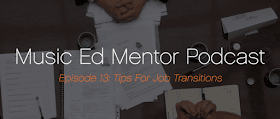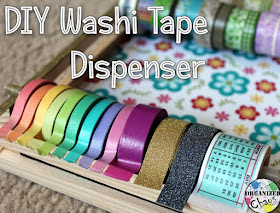I love teaching recorder. I loved learning recorder as a child, and even played with some early music groups in college, and I love passing along one of my favorite instruments to my students. I know not everyone feels that way, and no matter how much you love or hate it, teaching recorder can be quite a headache (literally and figuratively)! Today I want to talk about some basic considerations for recorder teaching: everything from choosing a recorder for students to use, to what age to teach it, and other basic questions to think about before you get started. Whether you're just getting started teaching recorders for the first time, or are unhappy with how you teach them now, I hope these ideas will help!
1. Communal or personal instruments?
I'll be honest- when I first found out that there were schools where students a class set of recorders rather than getting their own, I was pretty shocked. I know there are a lot of reasons why schools/ districts/ teachers end up doing this, but I highly recommend looking into ways to get students their own new recorder. I teach in a school where, for many students, paying $5 for an instrument is no simple request. Here's what we've done in my district: the district purchases a class set of recorders each year, and students are given the option to buy one of those new recorders from the school or rent a sanitized old one from the school (I only ever have 1-2 students who rent, so I actually just buy it for them and tell them an anonymous donor paid for it). We keep the rented ones from year to year, and we use the money from the previous year's purchases to buy new recorders the following year.
The nice thing is I'm able to keep the old rentals as spares when students forget to bring their instrument to class (more on that below), and because everyone buys their recorder from the school, parents are much more likely to buy them for convenience's sake, and I am ensured that everyone has an appropriate instrument with the same fingering and a decent tone.
2. Which recorder to buy?
I like 3-piece recorders with Baroque fingering (you can see if it's Baroque or German by looking on the back, just above the thumb hole, for a small B or G). I like 3-piece so that students can practice proper tonguing and breathing with just the mouthpiece and adjust the foot joint's angle so that their pinkie finger can reach the holes. It's also easier to clean it if you need to.
The Baroque fingering is more of a personal preference, but I do find it is more common in schools and in professional practice and I think the tuning is better on the low F's (and I actually like the idea of teaching students forked fingering, which prepares them for other instruments later on).
I'm honestly not too picky about brands, but trust Yamaha and Aulos the most. And this may come as a surprise to my long-time readers: I do NOT get recorders in different colors. Much as we all know I love rainbows and color groups for everything in my room, I feel strongly that it is my job to make sure students take the recorder seriously. There is so much disdain for the recorder by most people in the United States, and too often because the instrument is made of plastic, the students treat it like "baby instrument" or a toy. I like to stick with black, brown, or white for that reason.
3. What age is best?
In my current district we teach recorder in 3rd grade. As a student, I started recorder in 3rd grade myself. In my experience, though, recorder works best with 4th graders. Our district does recorder in 3rd grade to prepare students for instrument lessons, which they can start in 4th grade, but I find everything takes a lot longer, and the whole experience is much more frustrating for students, because we teach it in 3rd grade. If you have a choice, I would teach recorder in the fall of 4th grade- they have better fine motor skills, their note reading is better, and they have more maturity to handle the new challenge and the responsibility of bringing an instrument to class, practicing at home, etc. In my previous districts I always taught recorder in 4th grade, and in 3rd grade I focused a lot more on xylophones to get them ready for general instrumental skills and note reading skills on an instrument that was easier for them to play.
4. To karate or not to karate?
I love the idea behind the
Recorder Karate method books. I see so many students be so motivated by the concept of earning "belts". I've written a number of times about how I manage all of the logistics of the program- you can read about how I organize all the
sheet music here, and
what I use for belts (and how I store those) here- but ideally I think the program is best suited as a supplemental program rather than an instructional method for classroom use. It is an awesome way to motivate those students who either need some extra help and a slower pace, or to give enthusiastic students an additional challenge. In my previous districts, I had some days where students could sign up to come test on their belts during their recess time- they worked at their own pace of their own initiative outside of class to learn the songs, and it was a great motivator for them!
For large group instruction, I think there are a number of method books that work well- the key is in the delivery and sequencing, which I'll be writing more about in the future. If you're looking for some resource recommendations, though, check out
EEEase Into Recorder by Angie Kelton, or the
Complete Recorder Resource Kit by Denise Gagne (to name just a couple of favorites). Truthfully, I pull from all different sources to keep things interesting for the students!
With all of that said, my current district uses
Recorder Karate, so that is what I use now. As with any resource, though, there are many different ways to deliver it- stay tuned for a future post on some options for how to structure your class when using it as your primary recorder resource!
I hope this helps answer some of those basic questions as you get ready to start teaching recorders! I just started with my students last week and we are all. so. excited.
Want to get awesome content like this, see what I'm teaching each month, and get the latest updates sent straight to your inbox?
Click here to sign up for the Organized Chaos newsletter!






































